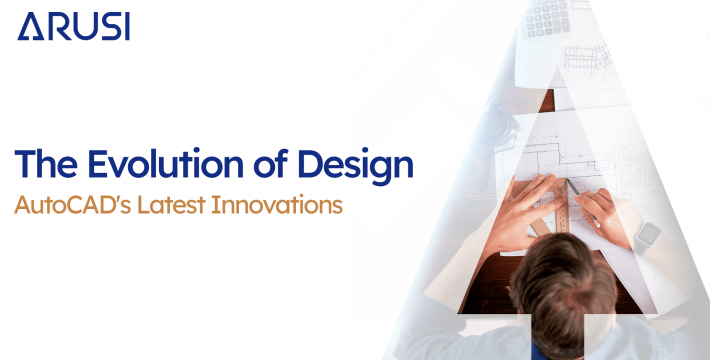
As we reflect on the past year in the field of computer-aided design (CAD), it’s impossible not to marvel at the leaps and bounds made in this field. The advancements in AutoCAD, a leading software in the CAD industry, have been particularly noteworthy. AutoCAD has long been the go-to tool for professionals across various sectors – from architecture and engineering to graphic design and project management. This year, however, has seen AutoCAD not just maintaining its standard of excellence but pushing the boundaries of what’s possible in CAD technology.
The evolution of AutoCAD over the past year is more than a story of software enhancement. It represents a broader shift in how we approach design and problem-solving in a digital landscape. This year’s innovations in AutoCAD are indicative of a deeper integration of technology in design processes, a trend that is reshaping industries globally. With these advancements, AutoCAD has cemented its position not just as a tool but as an indispensable ally in the design and execution of complex projects.
Innovation 1: Enhanced Customization and User Experience
One of the standout innovations in AutoCAD this year has been the significant enhancement in customization and user experience. Recognizing the diverse needs of its users, AutoCAD has introduced more robust and intuitive customization options. These allow users to tailor the software to their specific project requirements and personal preferences, resulting in a more efficient and enjoyable design experience. The improved user interface, combined with customizable toolbars and layouts, ensures that both new and seasoned users can optimize their workflow.
Innovation 2: Advanced Collaboration Tools
In a year where remote work and collaboration have become more crucial than ever, AutoCAD’s advancements in collaboration tools have been a game-changer. The integration of cloud-based technology has enabled teams to work together seamlessly, irrespective of their geographical location. Features such as shared views, version control, and real-time editing have streamlined the collaborative process, ensuring that team members are always on the same page and can work together efficiently.
Innovation 3: Integration with AI and Machine Learning
The incorporation of Artificial Intelligence (AI) and Machine Learning (ML) into AutoCAD represents a monumental shift in how design is approached. These technologies have enabled the software to learn from user input and patterns, leading to smarter, more predictive tools. This AI integration not only speeds up the design process but also enhances accuracy, reducing the likelihood of errors and the need for revisions.
Innovation 4: Enhanced 3D Modeling and Visualization
3D modeling and visualization have always been strengths of AutoCAD, but this year’s enhancements have taken these capabilities to new heights. The software now offers even more powerful and sophisticated tools for creating detailed 3D models and realistic renderings. These improvements have greatly aided professionals in visualizing their designs more vividly and accurately, allowing for a more immersive and comprehensive design experience.
Telecommunications Engineering Services and AutoCAD
An interesting application of AutoCAD’s recent innovations can be seen in the field of Telecommunications Engineering Services. The enhanced capabilities in 3D modeling, AI integration, and collaboration tools have significantly benefitted telecommunications projects, where precision and detail are paramount. These advancements have enabled engineers and designers in the telecommunications sector to conceptualize, design, and implement complex systems more efficiently and accurately than ever before.
Innovation 5: Improved Sustainability Analysis
Sustainability is a critical consideration in today’s design and construction projects. AutoCAD’s new sustainability analysis tools allow designers and engineers to assess the environmental impact of their projects right from the initial stages. This feature not only aids in creating more eco-friendly designs but also aligns with global efforts to promote sustainable development practices.
Innovation 6: Enhanced Mobile and Web Functionality
Recognizing the need for mobility in today’s fast-paced world, AutoCAD has significantly improved its mobile and web functionality. The AutoCAD mobile app and web platform have been enhanced to offer almost the same capabilities as the desktop version. This means that users can now draft, edit, and view their designs on the go, providing greater flexibility and ensuring that work is not confined to the office.
Innovation 7: Greater Compatibility and Integration with Other Software
AutoCAD’s increased compatibility and integration with other software is a significant advancement. The ability to seamlessly integrate with other tools and platforms – such as Revit, 3ds Max, and even non-Autodesk products – has greatly streamlined the design process. This interoperability is crucial for complex projects that require the use of multiple software solutions, ensuring a more integrated and efficient workflow.
Final Thoughts
The innovations in AutoCAD over the past year are not just about new features or improved performance. They represent a fundamental shift in the way we approach design and project execution.
By embracing new technologies and adapting to the changing needs of its users, AutoCAD has proven itself to be more than just a software; it’s a dynamic solution that evolves with the times. As we look forward to the future, it’s clear that AutoCAD and drafting design will continue to play a pivotal role in shaping the landscape of design and engineering, driving innovation and excellence across industries.


